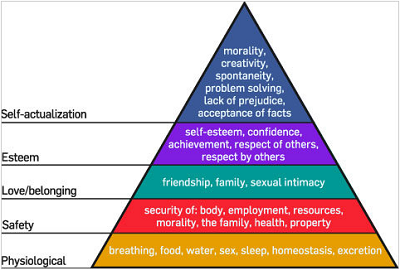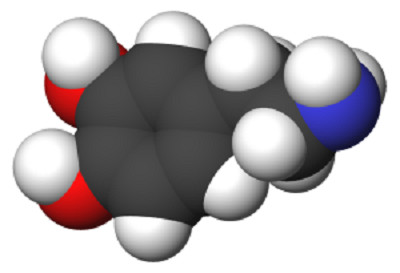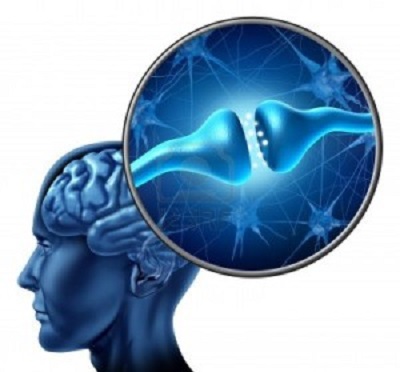Desire, Dopamine, and Libido

Desire and Libido
In a recent post I wrote I mentioned that libido is a type of desire, and how desire and sexual desire--ie: libido--are not separate forces within us but stem from the same root. In this post, I hope to elaborate upon this idea and provide a useful road map for regaining healthy desire and zeal for life.
Libido as a Subtype of Desire
There is very little talk about different types of desire or drive in our lives, and it seems that there are only two different kinds of desire spoken about: libido (sexual desire) and general desire, which is the want for everything else. Despite the linguistical differences, all types of desire, including libido, reside within this larger category of desire and drive. We have a root--a reserve--of desire within us and from that root stems desire for an infinite number of things. Dopamine, the desire neurotransmitter, motivates all types of desire, not just sex. In thinking critically and inquisitively about low libido, we need to re-frame libido and see it within the larger context of desire. Having a healthy desire in life positions us for success in many, seemingly unrelated, areas of our lives. Without healthy desire, it is difficult to find a greater sense of meaning. Abraham Maslow's (a humanist psychologist) hierarchy of needs illustrates the way that healthy desire is the cornerstone of life.
The word desire comes from from Latin desidero (“to long for, desire, feel the want of, miss, regret”), and is defined today as "to want; to wish for earnestly." Libido comes from the Latin word libido, meaning lust and desire. Libido is defined today as "sexual urges or drives" and "drives or mental energies related or based on sexual instincts but not necessarily sexual in and of themselves." Through these definitions it is easy to see the distinction between the two, but is that distinction really there? It is my assertion that at any given time we have a bank account of desire to spend, and while this account--this reserve--can be augmented, enhanced or decimated by other extenuating factors in life, we need to be judicious in how we spend that account. Ultimately, how much desire we have depends on how we use it throughout the day. More on this in just a little.
Dopamine: The Neurotransmitter of Imagination, Desire, and Reward
Before we delve into spending, reserving, and augmenting our reserves of desire, it is first important to understand a little of the biochemistry and biology of desire. This is, of course, a very simplified explanation of this. The primary neurotransmitter that is responsible for motivation is dopamine. Dopamine controls the brain's reward and pleasure centers. These centers both motivate us and reward us for our motivation. Beyond merely desire, I think of dopamine as the neurotransmitter of imagination--it makes sitting around and thinking about things, imagining them, pleasurable. This ability--the ability to imagine and then to create--is part of what makes us uniquely human and it should not be understated or underestimated. To regain this is partly to regain our humanness. In addition to making the act of thinking pleasurable, dopamine also makes going out and achieving things pleasurable. Dopamine rewards both thought and action. This is a key concept.
Dopamine presents a problem in life because we both have a limited supply of it and because in the presence of too much dopamine our receptors become desensitized to it. We stop responding to dopamine and it takes more and more dopamine to trigger the same response. There is a third problem, too, that dopamine presents: it sets people up for addiction. While an important aspect of dopamine, addiction is out of the scope of this post; however, while not classified as addictions, I believe that many of the actions that deplete our dopamine could be called addictive behaviors.
The Desire Bank Account
With dopamine it is important to remember three things about it: 1., the supply of dopamine is not infinite, 2., too much dopamine causes us to become desensitized to it, and 3., dopamine is the neurotransmitter of desire, drive, and reward. In thinking about libido, healthy libido is dependent on having both enough dopamine and still being sensitive to dopamine. This is true for all types of desire. When we lack any motivation in our lives, whether that be to clean the house, find a job or career that suits us better, or seek out a mate, that motivation is being mitigated by dopamine and our sensitivity to it. When we lack motivation it is because we either lack dopamine or we are no longer sensitive to it (again, this is a simplified, dopamine focused explanation).
Dopamine is also responsible for risky behaviors and many types of addition. Certain behaviors (including using drugs) cause an intimidate spike in dopamine. This spike feels good and people try and recreate the sensation. But the dopamine is no longer present in the same amounts or the brain has become accustomed to it (desensitized), so the amount of the behavior--the drug being used or the risk being taken--needs to be increased. This creates a cyclical pattern of use and abuse. This same pattern exists in the non-addicted as well--in the form of addictive behaviors--and it creates a slow but steady drain on desire.
It is no surprise that many people complain about lack of libido. While libido can be party explained though sex hormones, the role of dopamine in libido must be examined. When libido is considered as part of a larger reserve--a bank account--of desire and dopamine, it is then possible to see how desire is being spent throughout the day and if that spending leaves any additional desire left for libido.
Throughout the day desire is spent. This is normal and healthy but has the potential for pathology. Desire motivates us to get out of bed and to eat, to perform our best at work or school, to be social and build strong relationships. These are all positive uses of our reserves of desire. However, because dopamine feels good, we find other ways to keep the flood of dopamine going throughout the day and into the night. We eat sugary and fatty foods, where both the anticipation and taste flood our brains with feel-good dopamine. We obsessively check our social media accounts. We shop unnecessarily, spiking our dopamine. Not just shopping, but browsing things to buy on the internet produces similar, constantly elevated levels of dopamine. Looking at things to buy feels good to us, so we browse on the internet and think of all the things we could buy--many of those things we do not even want. This is like having a large hole in the bottom of a bucket and wondering why you can never fill the bucket up and use it.
With sex and libido, we live in a highly sexualized culture. Whether you think this is OK or not is not the point, the point is that being constantly confronted with sexually provocative images is stimulating the release of dopamine. This leads both to dopamine depletion and dopamine desensitization. Billboards, magazine adds, commercials on TV, the list goes on and on. When being constantly stimulated throughout the day, what desire is left for actual sexual and romantic encounters? Add internet pornography to this constant depletion of dopamine and desire and the results are dismal. Sexuality, in particular male sexuality, is now so tied to this constant state of stimulation that it is of no surprise that many men, including many young men--those in their teens and twenties--are suffering from extremely low levels of libido and have erectile dysfunction. People are so overstimulated they simply have no dopamine left (for more information on how pornography affects the biochemistry of the brain please visit www.yourbrainonporn.com).
Balancing the Checkbook: Regaining Desire, Libido, and Life
Ultimately, the goal is to regain desire in all areas of life. The focus on libido is a short-sided one. We need to conserve dopamine and resensitize our dopamine cell receptors to it in order to regain desire in all areas of our lives. As desire is regained it can be consciously and judiciously spent on the things that deserve it. But in order to do this, that proverbial hole in the bucket first needs to be patched. This is a slow process, and many people believe that it takes roughly 90 days (three months) to resensitize the brain to dopamine. In this time, dopamine production will also normalize.
To do this, a person needs to evaluate their minute-by-minute, day-to-day life, paying close attention to the activities (many of which are passive) that are causing a spike in dopamine. Many of these activities will be taking place while board, which makes them easy to slip into. When you notice this, just get busy being productive--work, studying, working out, cleaning the house. This is a conscious re-wiring of the brain where new synaptic connection are forged. It is not supposed to be easy, but once you understand how these patterns play out if life, it is rewarding.
Through paying attention to how dopamine is used throughout the day, dopamine can then be conserved and used on the things in life that matter. Is browsing things to buy on the internet how you want to use your dopamine? When you catch yourself in these behaviors, just ask, "does this help me regain my desire for life?" Most of the time the answer is "no." By weeding out the desire draining activities from life the inherent zeal for life begins to return, and with that, libido.
It may seem that I am overemphasizing the role of dopamine in our lives, in desire, and in libido, but from my vantage point, I am not. For people who are experiencing a lack of desire in life, understanding sex hormones and optimizing sex hormones is only part of the picture. When dopamine is low or the brain is desensitized to it, even people with healthy or high levels of testosterone will still suffer from low sex drive and/or performance issues. As a general rule, testosterone produces erections while a person is sleeping (such as in the morning) and dopamine is responsible for them during the day.
The Take Home Message
The take home message to this is that dopamine play a major role in all aspects of desire and drive in our lives, including sexual desire (libido). When people experience low desire, they need to see how desire is being used--wasted--throughout the day and put an end to those activities which are draining it. While it might be difficult to do so, since these activities bring a sense of pleasure, the reward for doing so is regaining a sense of desire for the things in life that really matter. Testosterone is only one part of libido, dopamine is the other. Maximize your dopamine. As humans, we are supposed to be excited about life. This drove us, as a species, out of the fertile crescent in Africa and into space. When our drive is lacking it is a sign of fundamental imbalance--one that can be corrected with diligence.
Site Disclaimers
General Guidence
The content on this site is provided for educational and informational purposes only and should not be construed as medical advice. Always consult a qualified healthcare provider before making changes to your diet, lifestyle, or health regimen, particularly if you are pregnant or nursing, under the age of 18, managing allergies or known sensitivities, or living with any medical conditions.
At RAW Forest Foods, your safety is our priority. Please note that our products are dietary supplements, not medications. The following disclaimer applies:
* These statements have not been evaluated by the Food and Drug Administration. These products are not intended to diagnose, treat, cure, or prevent any disease.
Ingredient Transparency and Allergen Awareness
We are committed to providing transparent ingredient information to help you make informed decisions. If you have or suspect you have allergies to any of our ingredients, we strongly advise against using our products, as allergic reactions can be severe.
Interaction with Medications
If you are taking any medications, consult with your healthcare provider before using supplements. Certain supplements may interact with medications, potentially altering their effectiveness or causing unwanted effects.
For more details, please review our full Terms and Conditions.









